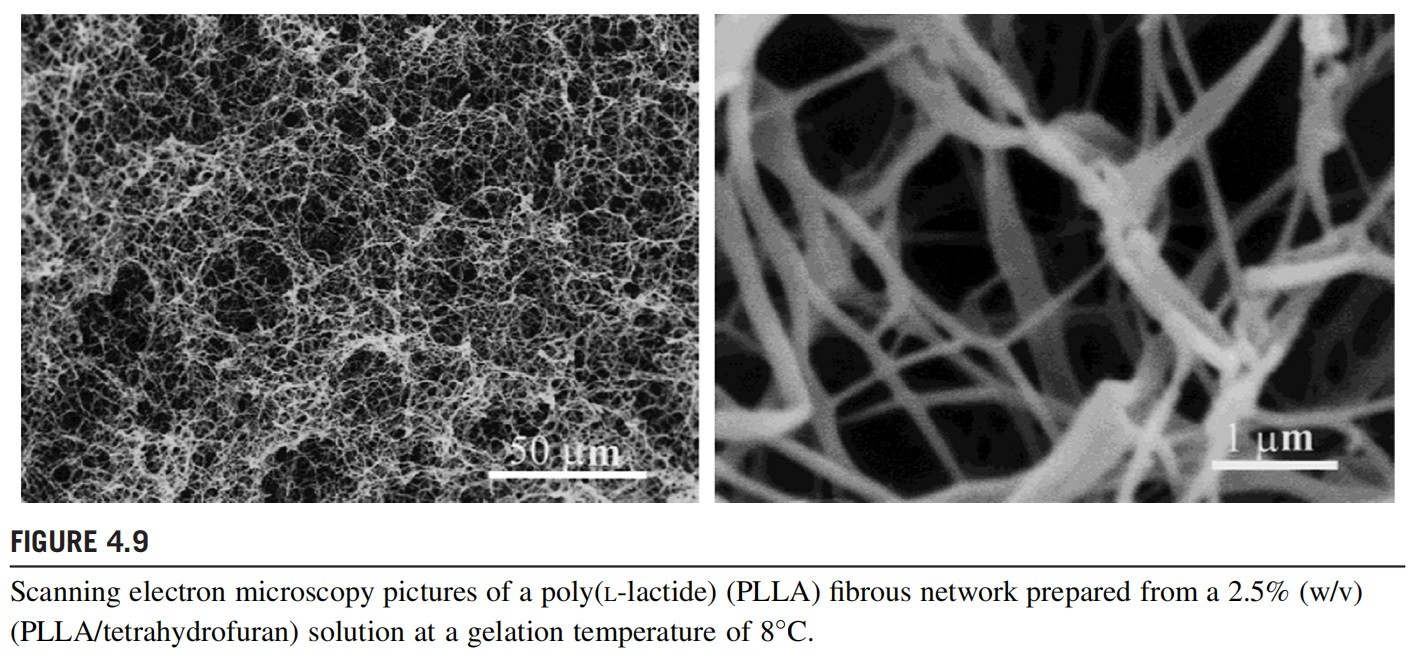
Poly(L-lactide) (PLLA) Fibrous Network
Thermally induced phase separation is another bottom-up approach to making nanofibers and a well-interconnected network, which is based on the thermodynamic demixing of a homogeneous polymer solution due to exposure to another immiscible solvent or rapid cooling of the solution below a bimodal solubility curve. The demixing can be for solideliquid (binary polymeresolvent mixtures) or liquideliquid (usually for ternary polymer/solvent/nonsolvent mixtures). As a result, the polymer solution is separated into a polymer-rich phase and a polymer-poor phase. After removal of the solvent, the polymer-rich phase solidifies and forms a porous scaffold. In fact, in addition to nanofibers, a range of morphologies such as open- or closed-pore membranes are possible depending upon the separation conditions. The most important parameters affecting morphology are polymer type and concentration, polymer molecular weight, solvent/nonsolvent ratio, and cooling path. These parameters manipulate the phase-separation processes, such as the gelation and solvent-exchanging process. The process can be used for a large number of thermoplastics, such as polyurethane, polyvinylidene difluoride, polycaprolactone, polyacrylic acid, and chitosan. In one of the studies nanofibrils of poly(L-lactide) (PLLA) with diameter 50e500 nm (Fig. 4.9) were made by liquideliquid phase separation in five steps: polymer dissolution, phase separation and gelation, solvent extraction from the gel with water, freezing, and then freeze-drying under vacuum. The nanofibrils have a high surface/volume ratio, w24/mm, and porosity as high as 98% (Ma and Zhang, 1999).

